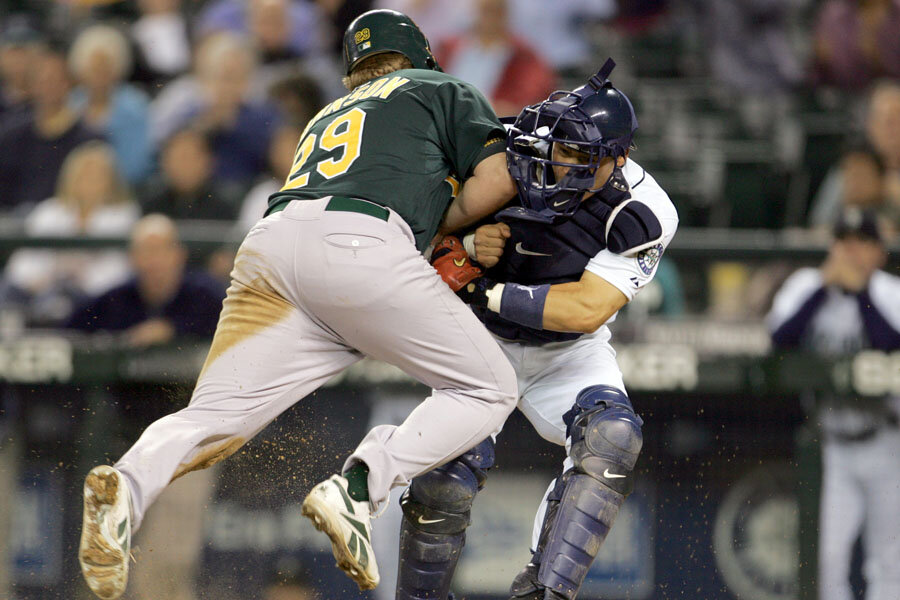Major League Baseball adopts home plate collision ban
Loading...
| New York
An experimental rule aimed at averting dangerous home plate collisions has been adopted for the upcoming Major League Baseball season, MLB and the Players Association jointly announced on Monday.
The rule prohibits a base runner from deviating from his direct pathway to the plate in order to initiate contact with the catcher, while the catcher will not be allowed to block home plate before catching the ball.
Base runners found to have gone out of their way to initiate contact will be called out, and will be called safe and awarded a run if home plate is blocked by a defensive player without possession of the ball.
The rule will be reviewed after the season for possible application in 2015.
"We believe the new experimental rule allows for the play at the plate to retain its place as one of the most exciting plays in the game, while providing an increased level of protection to both the runner and the catcher," Players Association chief Tony Clark said in a statement.
Attention was drawn to the issue in May 2011 when San Francisco Giants' All-Star catcher Buster Posey was lost for the season with a broken ankle and severely strained ligaments after absorbing a crunching hit delivered by the lowered shoulder of Scott Cousins as he caught a throw out in front of home plate.
In determining whether a runner deviated from his pathway to initiate a collision, the umpire will consider whether the runner made an effort to touch the plate, and whether he lowered his shoulders or pushed through with his hands, elbows or arms when veering toward the catcher, the announcement said.
The rule does not mandate that the runner always slide or that the catcher can never block the plate, but runners who slide and catchers who provide the runner with a lane to reach the plate will not be in violation of the new rule.
Instant replay will be available to review possible violations at the umpire crew chief's discretion.







